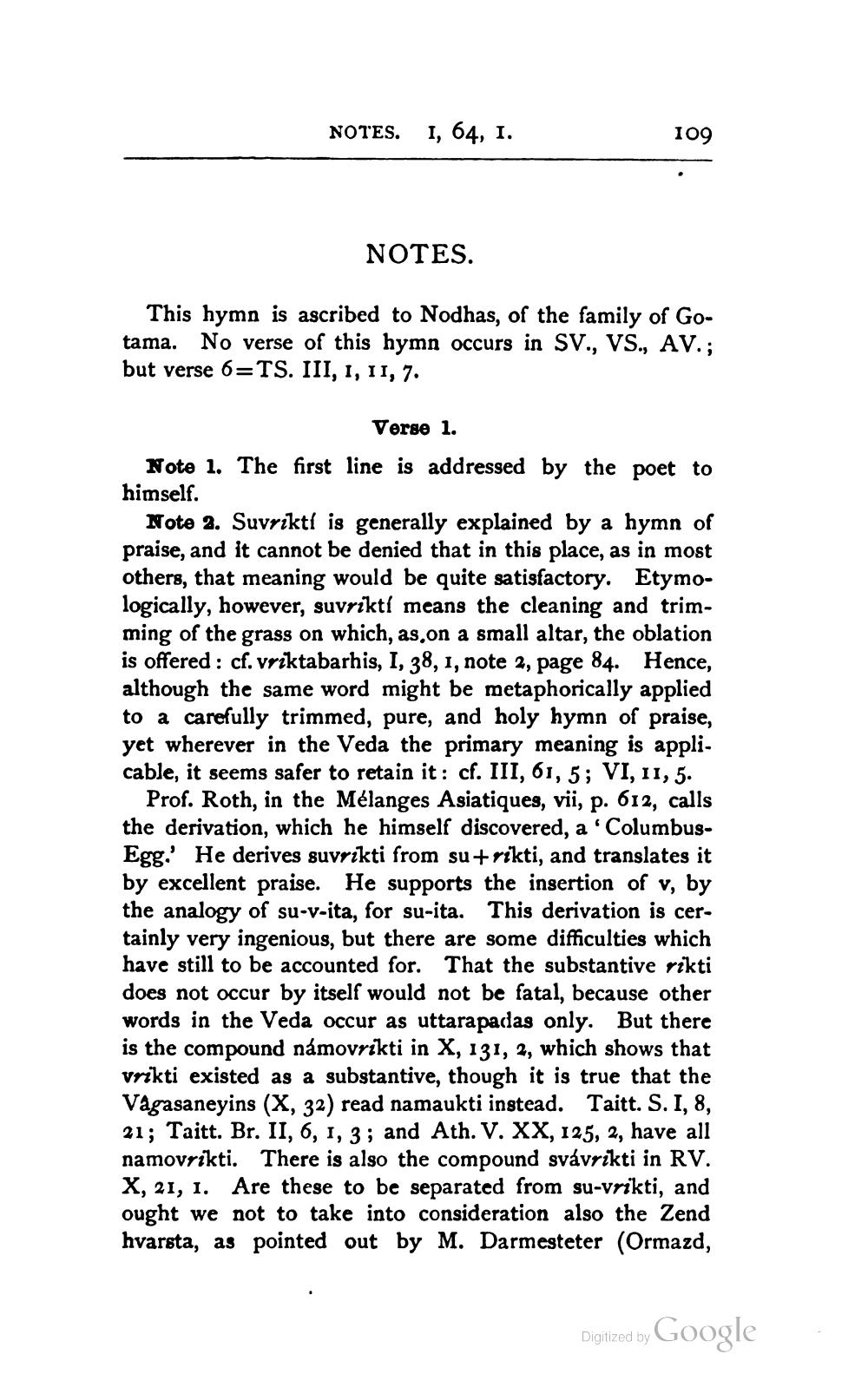________________
NOTES.
I, 64, I.
NOTES.
109
tama.
This hymn is ascribed to Nodhas, of the family of GoNo verse of this hymn occurs in SV., VS., AV.; but verse 6=TS. III, I, II, 7.
Verse 1.
Note 1. The first line is addressed by the poet to himself.
Note 2. Suvriktí is generally explained by a hymn of praise, and it cannot be denied that in this place, as in most others, that meaning would be quite satisfactory. Etymologically, however, suvriktí means the cleaning and trimming of the grass on which, as, on a small altar, the oblation is offered: cf. vriktabarhis, I, 38, 1, note 2, page 84. Hence, although the same word might be metaphorically applied to a carefully trimmed, pure, and holy hymn of praise, yet wherever in the Veda the primary meaning is applicable, it seems safer to retain it: cf. III, 61, 5; VI, 11, 5.
Prof. Roth, in the Mélanges Asiatiques, vii, p. 612, calls the derivation, which he himself discovered, a 'ColumbusEgg.' He derives suveikti from su+rikti, and translates it by excellent praise. He supports the insertion of v, by the analogy of su-v-ita, for su-ita. This derivation is certainly very ingenious, but there are some difficulties which have still to be accounted for. That the substantive rikti does not occur by itself would not be fatal, because other words in the Veda occur as uttarapadas only. But there is the compound námovrikti in X, 131, 2, which shows that vrikti existed as a substantive, though it is true that the Vagasaneyins (X, 32) read namaukti instead. Taitt. S. I, 8, 21; Taitt. Br. II, 6, 1, 3; and Ath. V. XX, 125, 2, have all namovrikti. There is also the compound svávrikti in RV. X, 21, 1. Are these to be separated from su-vrikti, and ought we not to take into consideration also the Zend hvarsta, as pointed out by M. Darmesteter (Ormazd,
Digitized by Google




